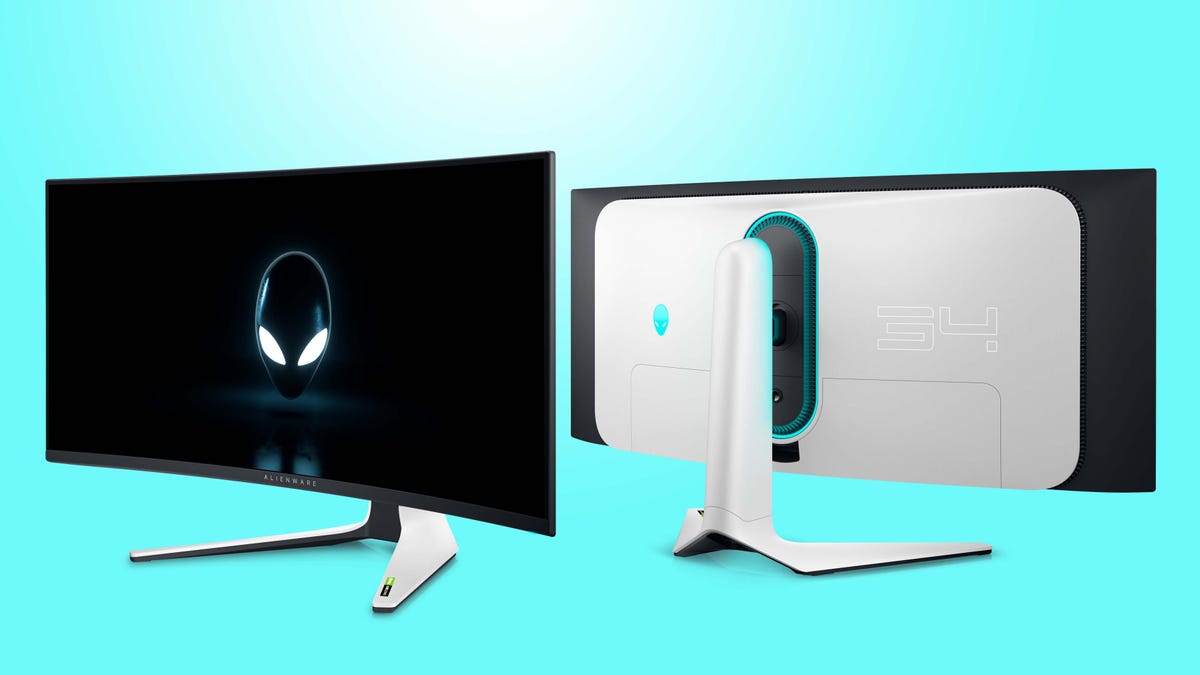Alienware shows off first Samsung QD-OLED gaming monitor at CES 2022
If it lives up to its promise and doesn't cost a fortune, the Alienware 34 Gaming Display may be the chocolate in gamers' peanut butter.

Samsung mixed the broad color gamut generated by its Quantum Dot technology with OLED's precisely emitted light, deep blacks and fast pixel response, and Alienware turned it into a droolworthy-looking gaming monitor. The 34-inch Alienware 34 Gaming Display (AW3423DW) is the first monitor to use a Samsung QD OLED panel, joining Samsung and Sony's TV announcements at CES 2022. I only had a brief chance to see it in action under awful lighting, but I was impressed by how high-contrast, sharp and saturated it looked with better-than usual highlight and shadow detail.
Alienware expects to ship the display on March 29 (it will ship first in China on March 2 and expand to other regions in April), but hasn't yet revealed the price.
My one big disappointment is that it doesn't support HDMI 2.1. Depending on the price, that may be merely annoying or inexcusable. Otherwise, the specs seem good. It has DisplayHDR 400 True Black certification, though it can hit 1,000 nits peak brightness, and like most OLED panels, it covers the entire P3 gamut. It's also factory calibrated, able to switch between P3 and sRGB via the onscreen menus, has a feature dubbed "Creator Mode" and lets you change the gamma settings.
OLED is notable for its ability to render bright highlights without losing a lot of detail, but I've always hated the way it can sacrifice detail and display noticeable color shift in the shadow areas. The color shift isn't a big deal unless you're editing photos or videos, but the clipping in the blacks, which many people don't even notice, makes me nuts. In theory, the QD and OLED combo should deliver better rendering in the shadows without necessitating weird gamma adjustments; in games, things that you need to see lurk in the dark.
The typical full-screen brightness, which doesn't matter for a TV but is crucial in a monitor, is only 250 nits, but OLED's abyssal blacks usually result in contrast that mitigates a dim IPS screen.
With a 3,440x1,440-pixel resolution, its aspect ratio is typical for widescreen monitors, so native game support shouldn't be rare; frequently, new panel technologies bring new resolutions or aspect ratios with them. Over HDMI it can hit up to 100Hz refresh, while DisplayPort goes up to 175Hz. One reason I wish it supported HDMI 2.1 is because since some of us have our consoles on our desks rather than by the TV.
The monitor does have separate audio-out and headphone jacks, as well as a four-port USB hub. It also supports Nvidia G-Sync Ultimate, four lighting zones and comes with an adapter for a 100x100 VESA mount.
The updated design most notably incorporates ventilation on all sides. 1,000-nit monitors with mini LED backlights can run hot, though it's not clear it's a similar problem for this technology as well.
And because everyone's always worried about burn-in with OLED, Alienware's offering a three-year warranty with specific coverage for burn-in. And like Samsung's OLED screens on phones and laptops it natively reduces blue light so you needn't worry about your eyes.

